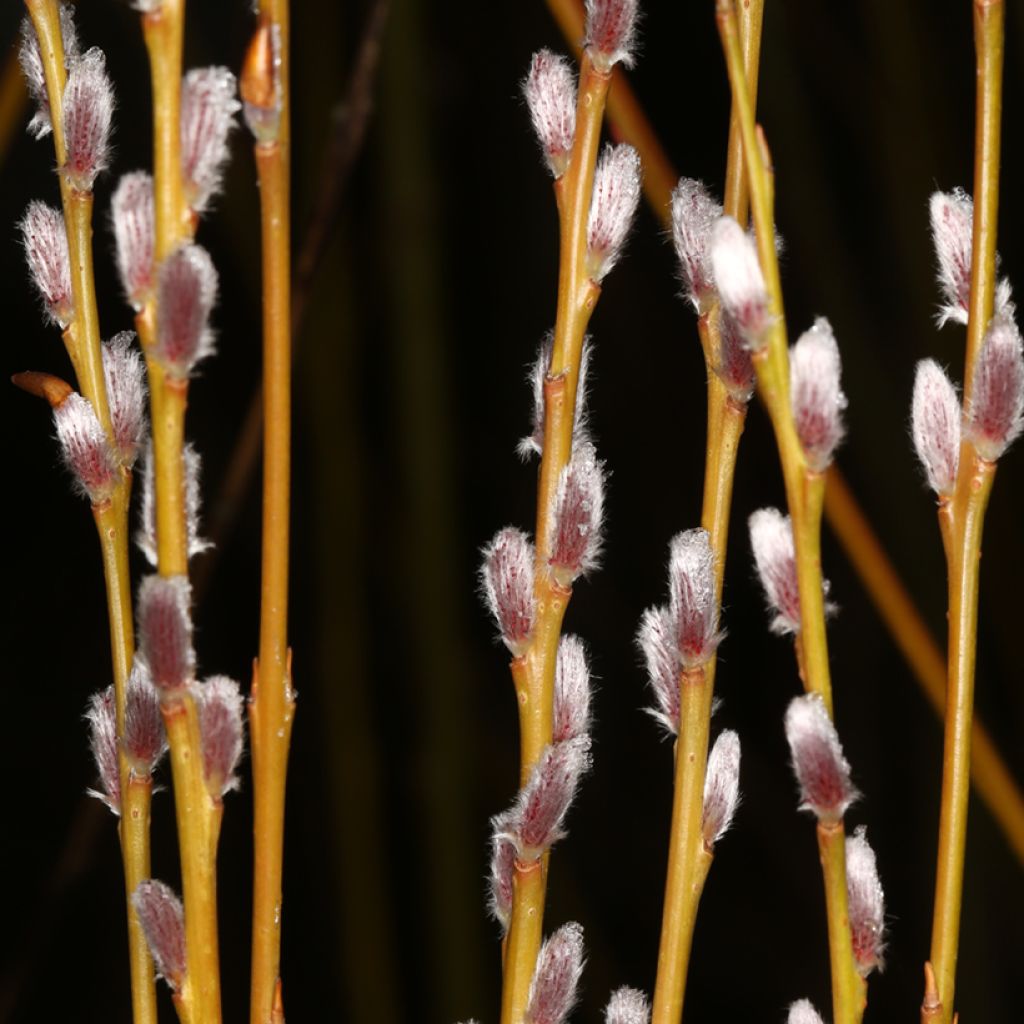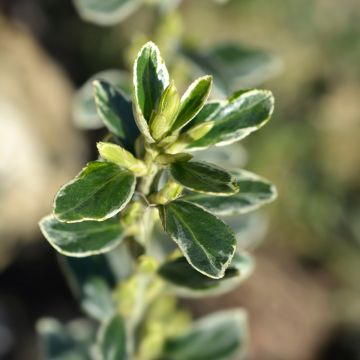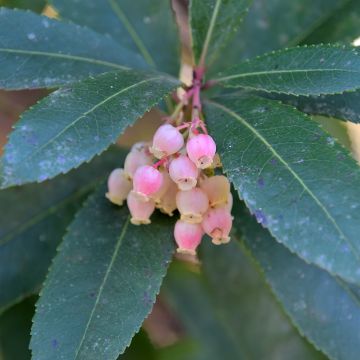

Salix purpurea Howki - Purple Willow
Salix purpurea Howki - Purple Willow
Salix purpurea Howki
Purple Willow, Purple Osier
Special offer!
Receive a €20 voucher for any order over €90 (excluding delivery costs, credit notes, and plastic-free options)!
1- Add your favorite plants to your cart.
2- Once you have reached €90, confirm your order (you can even choose the delivery date!).
3- As soon as your order is shipped, you will receive an email containing your voucher code, valid for 3 months (90 days).
Your voucher is unique and can only be used once, for any order with a minimum value of €20, excluding delivery costs.
Can be combined with other current offers, non-divisible and non-refundable.
Home or relay delivery (depending on size and destination)
Schedule delivery date,
and select date in basket
This plant carries a 24 months recovery warranty
More information
We guarantee the quality of our plants for a full growing cycle, and will replace at our expense any plant that fails to recover under normal climatic and planting conditions.
Would this plant suit my garden?
Set up your Plantfit profile →
Description
The Purple Osier or Salix purpurea 'Howki', also known as Purple Willow or Red Willow, is a variety with a narrow and columnar habit that can reach up to 7m in height and only 2-3m in width. it is vigorous and develops long, lanceolate, narrow, and silver-green leaves. They are very attractive in spring as they are tinged with orange. The flowering occurs early in spring, before the leaves appear, in the form of small but numerous intense pink basal flowers, bringing colour to the garden at a time when it lacks vibrancy. This fast-growing willow can be pruned at any time of the year and is perfect for quickly creating an elegant ensemble, in an informal or clipped hedge.
Salix purpurea belongs to the Salicaceae family. It is a species widely distributed in Europe, Central Asia, Japan, and North Africa. In its natural habitat, this pioneer species colonises the banks of rivers and ponds, on sandy or gravel-rich soil. While it appreciates a certain level of humidity, the purple willow does not tolerate constantly flooded soils that suffocate its roots. It can withstand moderate periods of drought. Its lifespan is about 20 years. The Red Willow has a dense, ball-shaped habit, composed of numerous thin, flexible, and heavily branched stems close to the ground. At maturity, this small, fast-growing willow will not exceed 5-6m in height, typically forming a large shrub 2.50m in height and 1.50m in width. The young branches are shiny mahogany red and become grey-green with age. The buds are also purple. The deciduous foliage consists of leaves arranged in an opposite, rather than alternate, fashion as in most other willows. They are thin and narrow, elliptical in shape, measuring 5 to 8cm in length. The upper side of the leaf is light green-silver, while the underside is bluish with prominent veins. The foliage turns yellow in autumn. The insignificant flowering takes place in March-April, before the leaves appear. Male specimens bear silky, 3 to 5cm long catkins, a silver-green colour punctuated by purple stamens. Female specimens bear shorter and inconspicuous catkins. The fruit is a fuzzy capsule that releases decorative seeds covered in long bristles.
Salix purpurea 'Howki' is a columnar variety, tall and narrow for its type, reaching a height of 4-6m (up to 7m) and a width of 2-3m at maturity.
As elegant in flower beds as in hedges, the Purple Willow 'Howki' is particularly attractive in spring during flowering and leaf emergence and brings a colourful touch and a touch of wild grace to the garden. It easily fits into a country hedge and naturally finds its place near water features. It is used in basketry and tolerates repeated pruning, a quality sought after for creating large, well-maintained borders or hedges, both in contemporary and natural gardens. It can also be planted on large, moderately dry slopes, where it will retain the soil. Regularly prune it after flowering to encourage dense growth and the production of numerous red and floriferous branches. For example, it can be associated with dogwoods (Cornus Baton rouge, Cornus Flaviramea, Cornus sanguinea), hazelnuts, Japanese quinces, flowering almonds, or brooms in a mixed hedge.
Properties:
This purple willow is a honey-producing plant, also widely used in basketry. Its ability to stabilise unstable soils along riverbanks through its extensive and branching root system is used for riverbank restoration.
Report an error about the product description
Plant habit
Flowering
Foliage
Botanical data
Salix
purpurea
Howki
Salicaceae
Purple Willow, Purple Osier
Saule pourpre Howki
West Asia
Other Willow - Salix
View all →Planting and care
Plant Purple Willow Howki preferably in autumn, in a very sunny or partially shaded position in warm climates. It requires a fairly deep soil, preferably neutral to limestone, moist but well-drained and poor. It prefers soil that occasionally dries out rather than heavy, constantly waterlogged soil. However, it can tolerate poor and sandy soils, even gravelly ones. Ideally, at planting, use a mixture composed of half compost and half garden soil mixed with coarse sand and gravel if it is compact and clayey. It is perfectly resistant to cold and heavy frost. To promote a bushy habit and the formation of flowering branches, prune it short at the start of vegetation, every 2 or 3 years, or simply maintain its shape every year after flowering.
Planting period
Intended location
Care
This item has not been reviewed yet - be the first to leave a review about it.
Similar products
Haven't found what you were looking for?
Hardiness is the lowest winter temperature a plant can endure without suffering serious damage or even dying. However, hardiness is affected by location (a sheltered area, such as a patio), protection (winter cover) and soil type (hardiness is improved by well-drained soil).

Photo Sharing Terms & Conditions
In order to encourage gardeners to interact and share their experiences, Promesse de fleurs offers various media enabling content to be uploaded onto its Site - in particular via the ‘Photo sharing’ module.
The User agrees to refrain from:
- Posting any content that is illegal, prejudicial, insulting, racist, inciteful to hatred, revisionist, contrary to public decency, that infringes on privacy or on the privacy rights of third parties, in particular the publicity rights of persons and goods, intellectual property rights, or the right to privacy.
- Submitting content on behalf of a third party;
- Impersonate the identity of a third party and/or publish any personal information about a third party;
In general, the User undertakes to refrain from any unethical behaviour.
All Content (in particular text, comments, files, images, photos, videos, creative works, etc.), which may be subject to property or intellectual property rights, image or other private rights, shall remain the property of the User, subject to the limited rights granted by the terms of the licence granted by Promesse de fleurs as stated below. Users are at liberty to publish or not to publish such Content on the Site, notably via the ‘Photo Sharing’ facility, and accept that this Content shall be made public and freely accessible, notably on the Internet.
Users further acknowledge, undertake to have ,and guarantee that they hold all necessary rights and permissions to publish such material on the Site, in particular with regard to the legislation in force pertaining to any privacy, property, intellectual property, image, or contractual rights, or rights of any other nature. By publishing such Content on the Site, Users acknowledge accepting full liability as publishers of the Content within the meaning of the law, and grant Promesse de fleurs, free of charge, an inclusive, worldwide licence for the said Content for the entire duration of its publication, including all reproduction, representation, up/downloading, displaying, performing, transmission, and storage rights.
Users also grant permission for their name to be linked to the Content and accept that this link may not always be made available.
By engaging in posting material, Users consent to their Content becoming automatically accessible on the Internet, in particular on other sites and/or blogs and/or web pages of the Promesse de fleurs site, including in particular social pages and the Promesse de fleurs catalogue.
Users may secure the removal of entrusted content free of charge by issuing a simple request via our contact form.
The flowering period indicated on our website applies to countries and regions located in USDA zone 8 (France, the United Kingdom, Ireland, the Netherlands, etc.)
It will vary according to where you live:
- In zones 9 to 10 (Italy, Spain, Greece, etc.), flowering will occur about 2 to 4 weeks earlier.
- In zones 6 to 7 (Germany, Poland, Slovenia, and lower mountainous regions), flowering will be delayed by 2 to 3 weeks.
- In zone 5 (Central Europe, Scandinavia), blooming will be delayed by 3 to 5 weeks.
In temperate climates, pruning of spring-flowering shrubs (forsythia, spireas, etc.) should be done just after flowering.
Pruning of summer-flowering shrubs (Indian Lilac, Perovskia, etc.) can be done in winter or spring.
In cold regions as well as with frost-sensitive plants, avoid pruning too early when severe frosts may still occur.
The planting period indicated on our website applies to countries and regions located in USDA zone 8 (France, United Kingdom, Ireland, Netherlands).
It will vary according to where you live:
- In Mediterranean zones (Marseille, Madrid, Milan, etc.), autumn and winter are the best planting periods.
- In continental zones (Strasbourg, Munich, Vienna, etc.), delay planting by 2 to 3 weeks in spring and bring it forward by 2 to 4 weeks in autumn.
- In mountainous regions (the Alps, Pyrenees, Carpathians, etc.), it is best to plant in late spring (May-June) or late summer (August-September).
The harvesting period indicated on our website applies to countries and regions in USDA zone 8 (France, England, Ireland, the Netherlands).
In colder areas (Scandinavia, Poland, Austria...) fruit and vegetable harvests are likely to be delayed by 3-4 weeks.
In warmer areas (Italy, Spain, Greece, etc.), harvesting will probably take place earlier, depending on weather conditions.
The sowing periods indicated on our website apply to countries and regions within USDA Zone 8 (France, UK, Ireland, Netherlands).
In colder areas (Scandinavia, Poland, Austria...), delay any outdoor sowing by 3-4 weeks, or sow under glass.
In warmer climes (Italy, Spain, Greece, etc.), bring outdoor sowing forward by a few weeks.


















































